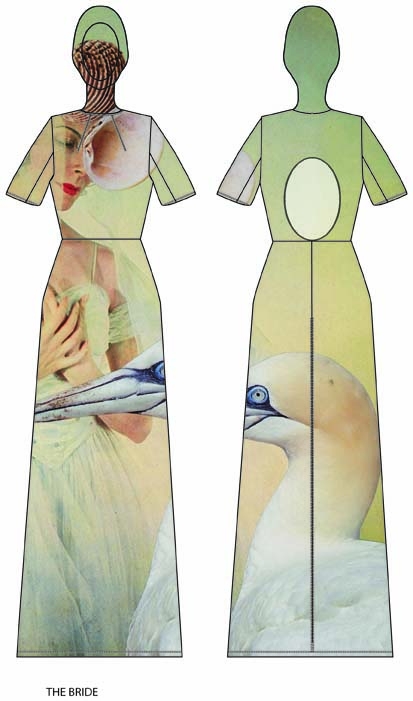Striding through rooms lined with a million flowers, slipped between crisply tailored frocks in textured black and grey, four silhouettes from last summer’s Dior haute couture collection stood apart, like a chemical spill in clean water. Toxic-waste tones of green and roiling crimson suppurated between horizontal bands across bodices and skirts, spatted with illusory drips of paint. The dresses and coats were sewn from bespoke silks printed by Bucol, France’s most specialised producer; a tribute by Dior designer Raf Simons to the spray paintings of Sterling Ruby.
This is not the first time that Simons and Ruby have been united in cloth – in 2009 the American artist was invited to bleach his way across the denim used for the Belgian designer’s eponymous menswear range. At the time, Ruby described the process as one in which Raf called on him ‘in order to degrade the material’. For Simons, a designer recently associated with impeccably structured, pared-back refinement, Ruby’s Anti Print 3 (Finish Architecture, Kill Minimalism, Long Live The Amorphous Law) (2005) must have read like a personal call to revolution; an invitation to reinvestigate his fascination with youth culture during his pre-Jil Sander years, and subvert perfection with the mucky thrills of clotted wax, dripped paint and bleach.
While Simons had the world’s finest silk houses on hand to weave fashion from art, refinements in digital printing have opened up the world of imagery for use in garments. Unlike traditional prints and jacquard patterns, digital printing is fast and flexible; it has no need for repeats, no limit on colours, no maximum length and no minimum order. It has also provided new routes for collaboration between designers and the visual artists they admire.
After the Brazilian designer Pedro Lourenço was taken on a visit to Kon Trubkovich’s New York studio he approached the artist about using some images for his collections. “From the get-go, the idea of using my artwork seemed irrational,” says Trubkovich, “like the high fashion equivalent of throwing an image onto a T-shirt. So we decided to work together to make original prints.” The results became the core of last season’s collection: warped plaids, ghostly distortion and oversized, static-flecked pictures of horses.
The rather ephemeral nature of fashion, the very different critical response and the chance to make contact with an audience beyond the artworld made the collaboration liberating for Trubkovich, but not in a way that has affected his work directly. He was interested to see his frozen screenshots reanimated on a living body, injecting some illusion of life and depth into the arrested two-dimensional images, but judges that if he tried to bring this sculptural, kinetic quality off the catwalk and into his studio work, it would become “a cliché”.
Linder Sterling, who has collaborated on a number of collections with the British designer Richard Nicoll since 2009, considers the migration of her collages onto clothing to be a further, exciting hijacking of the image, “an opportunity to let these found images of women come full circle”. Her collaged photographs of female nudes and flowers were digitally printed onto dresses that in turn hid the wearer’s nude body. Sterling and Nicoll placed images of her collages on a fluid crêpe de Chine dress shape that he calls Stella – the arms and torso of the original body positioned to coincide with that of the body beneath the thin cloth. Sterling will also be working with Nicoll to create costumes for her performance work ‘The Ultimate Form’, the culmination of her exhibition at the Hepworth Wakefield (16 Feb-12 May 2013).
As well as fresh inspiration from the human body, Sterling is interested in the new, more ‘democratic’ audience that her involvement with the fashion world has brought. Not only coverage in Grazia, but women who collect the Stella dresses “whereas they can’t afford – or are not interested in – collecting art.”
Linder’s performance piece ‘The Ultimate Form’ takes place on 11 May at Hepworth Wakefield, where her exhibition continues until 12 May. Linder is also showing work in a two-person exhibition with Tom Burr at Stuart Shave/Modern Art, London until 25 May.
From the April 2013 issue of ArtReview
